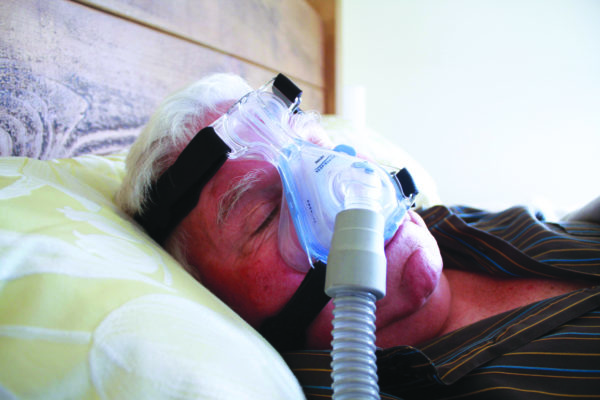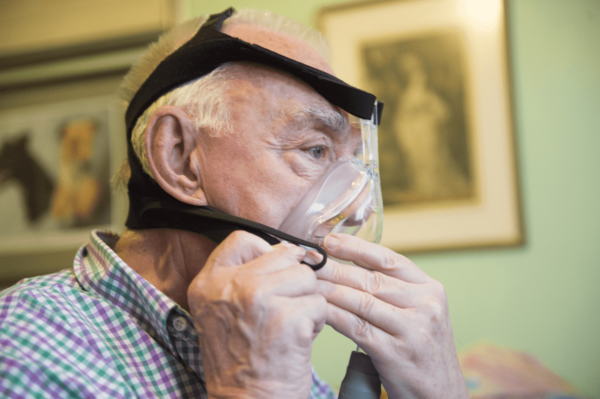Home Ventilation Therapy
In simple terms, home ventilation therapy is the use of a machine to inflate and deflate the lungs in those who have diminished or very limited ventilatory capacity.
A ventilator machine (air pump) delivers air to the lungs using positive pressure, and helps keep the small airways and the air sacs in the lungs open and inflated. The ventilator assists when you breathe, working with you, not against you.
How does a ventilator machine help?
Dependent on the setting, the ventilator either automatically recognises when you have started to breathe in and assists with/supports each breath, or will initiate breathing for you. This in turn allows you to take in more air each breath and delivers this to your lungs. You will also be able to get rid of the waste products of breathing more readily when exhaling and will feel less breathless.
The mask used fits either over your nose alone, or over both the nose and mouth. A strap holds the mask firmly in place but it can easily be removed to take a drink or to enable you to move away from the machine should you wish to go to the toilet etc.
This system reduces the work of breathing and ensures that your respiratory requirements are met. Baywater Healthcare supplies a range of ventilator machines for both hospital and home use, with nasal and full-face masks.
How do the lungs work?
The principal function of the respiratory system is to get oxygen into the body and to release carbon dioxide (the waste product of breathing). To achieve this, the respiratory system requires a gas-exchanging organ (alveoli in the lungs), an effective pump to move the air (lungs, the breathing muscles – diaphragm) and effective control of the required depth and rate of breathing (the brain). When we breathe, our respiratory muscles contract and the air that we inhale passes through our upper airways, nose, pharynx, larynx, trachea, bronchioles and onto our alveoli. It is when the air reaches the alveoli that the gas exchange takes place; the blood eliminates its carbon dioxide waste and replaces it with oxygen to feed the body cells.
There are two main reasons that may cause difficulties in breathing:
Obstruction: this is where the carbon dioxide stays within the alveoli. It causes breathlessness and frequent coughing to help clear secretions.
Muscle weakness: in this case, you are not able to contract your muscles to allow air to enter the lungs and provide oxygenation.
Main symptoms of respiratory failure
People with respiratory failure may develop symptoms due to their reduced oxygen and increased carbon dioxide levels. These effects may include:
Restlessness, confusion, agitation and breathlessness caused by a lack of oxygen
Headaches, drowsiness and confusion caused by a buildup of carbon dioxide
Respiratory failure can be acute (developing rapidly) or chronic (developing slowly).
Respiratory failure is usually confirmed when you are in hospital by taking/performing an ‘arterial blood gas sample’. This sample of blood is taken from an artery rather than from a vein and is usually obtained from the wrist. This provides accurate information about how well the respiratory system exchanges oxygen and carbon dioxide. If a more comprehensive assessment is required, you may also be required to undertake an overnight sleep study and further lung function investigations.
Your consultant is the best person to speak to and advise you on your specific medical condition.
Home ventilation therapy:
- Gives you a better night time sleep and therefore less daytime tiredness
- Improves lung function – allows better oxygen intake
- Makes flushing out of carbon dioxide more efficient when breathing
- May make it easier for you to clear your airway of secretions – reduces morning headaches
- Gives you more energy to carry out daily activities
- May make you feel more alert and have more energy to perform tasks during the day
- Can reduce re-admissions to hospital






